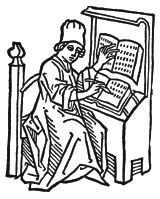Last week's newsletter suggested various ways to change the view in Word as a way to pick up errors missed during a first editing pass. You can read the newsletter here:
http://www.topica.com/lists/editorium/read/message.html?mid=1710581825
Unfortunately, I forgot to include one method that is both effective and easy to use--a feature called "Blue background, white text." Here's how to turn it on:
1. Click the "Tools" menu.
2. Click "Options."
3. Click the "General" tab.
4. Put a check in the box labeled "Blue background, white text."
5. Click the "OK" button.
That will display your document with white text on a blue background, just like the old WordPerfect 5.1 for DOS--definitely a new way to view your document. You may find that you actually prefer working with this feature turned on--it's certainly easy on the eyes. If so, when you're ready to give your document a second look for missed typos, just turn the feature off, reverting to black text on a white background.
If you want other background colors (bright green!), they're certainly available, at least since Word 97. Here's how to get them:
1. Click the "Format" menu.
2. Click "Background."
3. Click the color you want to use.
Note that using this feature overrides the blue background (but not the white text) of "Blue background, white text," if you have it turned on, so you'll probably want to turn it off before using a background color. Also, happily, background colors don't print; as the Help file notes, they're designed for "viewing documents only"--which is exactly what we want. (Background colors are also useful in creating Web pages, but that's another story.)
By the way, you may find that you like editing in some of the background colors. As I write this, I'm using the light green on the bottom row of standard colors--a nice change from Word's usual stark white. If the standard colors aren't enough, you can click "More Colors" and really get crazy. Furthermore, once you've set a color you like, you can save it in a template that you can attach to any document you like. Just be sure to reattach the regular template before sending the document out into the real world.
_________________________________________
READERS WRITE
Several readers sent suggestions about reading documents in a new way to catch additional typos.
Nancy Newlin (nancynewlin@earthlink.net), who inspired this week's article, wrote, "Here's another one I learned many years back that 'tricks' the eyes into thinking they're seeing something new: print the document on something other than white paper--yellow, green, blue, etc. Then it all looks NEW. Works for me!"
Preston Earle wrote, "Another effective way to spot typos is to read the document backwards."
Dave Erickson suggested reading aloud as a way to catch errors.
In a follow-up to Lyon's Law of Typos, mentioned in last week's newsletter, Marie Shear wrote, "Shear's Law of Typos, discovered by a widely unheralded writer and editor, specifies that the number of errors is directly proportional to the number of copies that have just been distributed and to the rank of the recipients."
I'd seen the law in action, but now I know its discoverer!
Many thanks to Nancy, Preston, Dave, and Marie for their messages.
_________________________________________
RESOURCES
After reading about Lyon's Law of Typos in last week's newsletter, Steve Dobney sent a link to a wonderful article, "Muphry's Law," by John Bangsund, who served for many years as editor for the Australian-based (Victoria) Society of Editors Newsletter. You'll find John's article here:
http://users.pipeline.com.au/bangsund/muphry.htm
You'll also enjoy John's Web site, Threepenny Planet, which features information about him and several delightful articles about the publishing world:
http://users.pipeline.com.au/bangsund/
For readers of Editorium Update, John particularly recommends "On Looking It Up":
http://users.pipeline.com.au/bangsund/ramble.htm)
and "How I Became an Editor":
http://users.pipeline.com.au/bangsund/howcomed.htm
If you're looking for a highly experienced freelancer, you'll probably be interested in John's services. You can reach him here:
mailto:bangsund [at symbol] pipeline.com.au
And you can see his curriculum vitae here:
http://users.pipeline.com.au/bangsund/cv.htm
Thanks to Steve and John.
